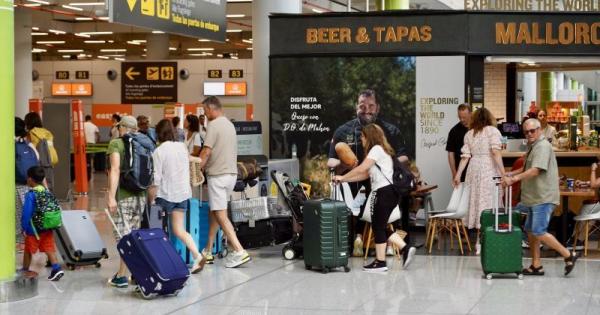From tomorrow, Sunday October 12, all UK nationals travelling to Spain and other Schengen Area countries will face new travel requirements under the Entry/Exit System (EES). The system, designed to enhance security and streamline the border control process, will automatically register travellers every time they cross an EU external border.
And the Foreign Office advice is to get to airports three hours prior to departure as the gradual introduction of the scheme is expected to cause some delays. When travelling into and out of the Schengen area, for short stays, you may need to:
have your fingerprints and your photo taken
answer the Schengen Border Code questions
The FCO explains: If you are travelling to a country in the Schengen area for a short stay using a UK passport, you will be required to register your biometric details, such as fingerprints and a photo, when you arrive. You do not need to take any action before you arrive at the border, and there is no cost for EES registration. After it is fully implemented, EES registration will replace the current system of manually stamping passports when visitors arrive in the EU.
If you are travelling to the Schengen area
When EES is introduced, you may need to create a digital record on your first visit to the Schengen area at the port or airport on arrival. You will need to submit your fingerprints and have your photo taken at dedicated booths. You will not need to provide any information before travelling to a Schengen area country. If you are flying to a country in the Schengen area, you will complete EES checks when you arrive at your destination. The checks may take a few minutes, so be prepared to wait during busy times.
As the EES system is rolled out, travellers can take steps to minimise delays and ensure smooth entry into Spain and other Schengen countries:
Arrive Early at the Airport: Expect longer wait times due to the new biometric checks. Arriving at least three hours before your flight will give you ample time to go through immigration.
Check Flight and Immigration Guidelines: Stay updated on new immigration procedures by checking airline websites or government sources before your departure.
Ensure All Documents Are Ready: While travelling with an up-to-date passport is essential, remember that you will also need to have your biometric data taken, so ensure you follow the instructions at the border check.
Use Mobile Alerts: Set up flight tracking and travel alerts to be notified of any changes or delays, especially due to the weather or the new border procedures.
If you frequently travel to the Schengen area for work and/or leisure purposes, you must ensure that your total stay in the Schengen area is no more than 90 days in every 180 days. You must be aware of the penalty and enforcement approach for exceeding the immigration limit in any individual Member State you plan to travel to, or through. Your digital EES record is valid for 3 years. If you enter the Schengen area again during this time, you will only need to provide a fingerprint or photo at the border, when you enter and exit.
The UK Embassy in Madrid has issued a crucial warning to British citizens residing in Spain ahead of the implementation of the new European Entry/Exit System (EES) passport checks. Starting from October 12, 2025, the EES will introduce stringent entry requirements for travelers entering the Schengen Area. The embassy advises UK nationals not to travel with expired TIE (Tarjeta de Identidad de Extranjero) cards, as they could face difficulties at the border.
This advisory comes at a time when many British expats in Spain are facing delays in renewing their residency documents. The issue has raised concerns about the impact on both business and leisure travel, as the EES system is set to enforce tighter passport control checks that could potentially result in disruptions for individuals without valid documents.
